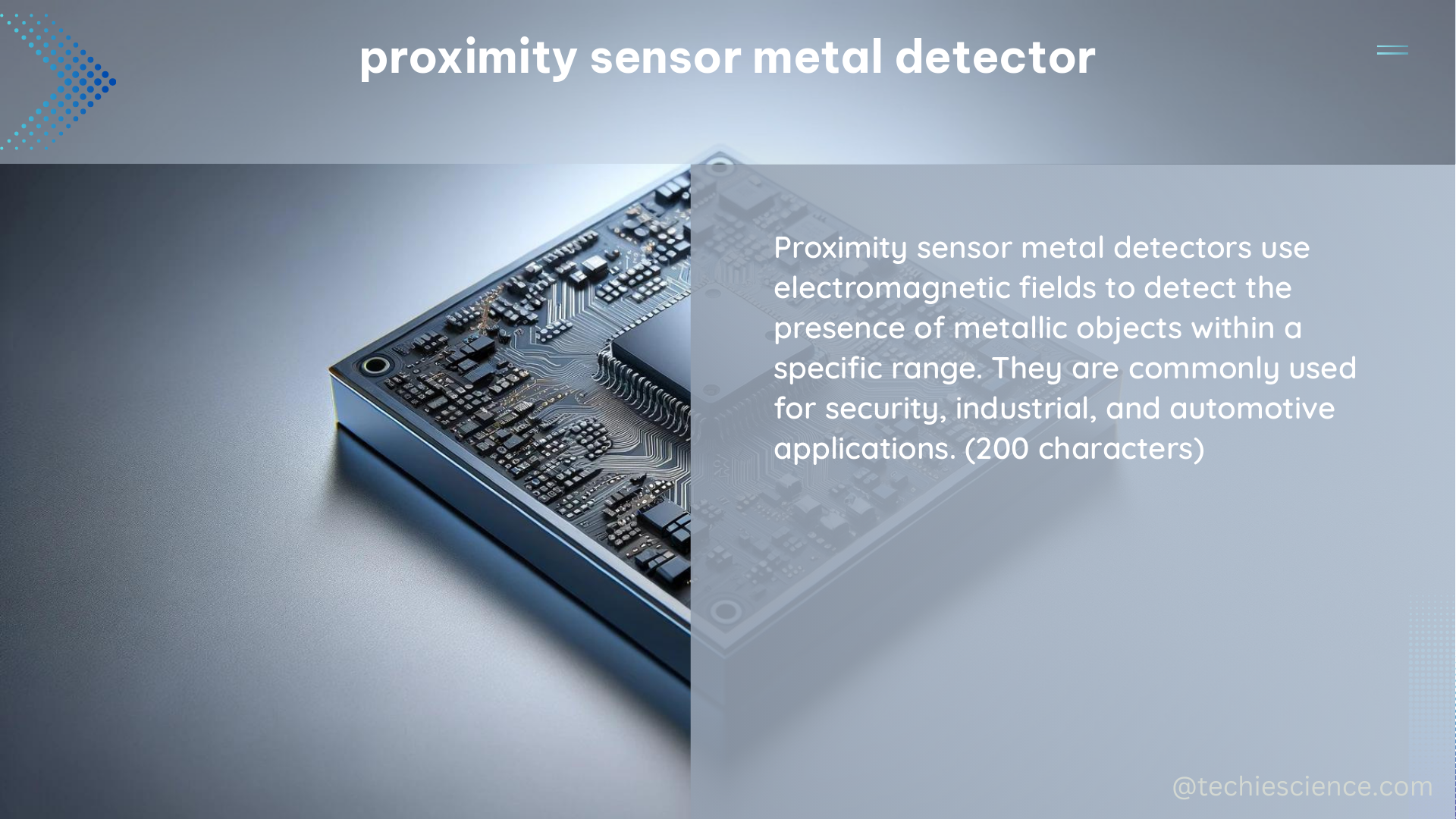Proximity sensor metal detectors are sophisticated devices that utilize electromagnetic induction to detect the presence of metal objects within a specific range. The sensitivity of these sensors is a critical factor that determines their ability to identify small metal objects at a given distance. This comprehensive guide delves into the technical specifications, performance characteristics, and industry standards surrounding proximity sensor metal detectors, providing a valuable resource for DIY enthusiasts and professionals alike.
Understanding Sensitivity and Limit Distance
The sensitivity of a proximity sensor metal detector is often measured in terms of the limit distance, which is the maximum distance at which the detector can reliably detect a metal object. A study published in the Journal of Sensors compared the sensitivity of various metal detector designs, including industrial inductive proximity sensors, planar sensors with wireless data readout, and a chaos-based metal detector/proximity sensor. The results showed a wide range of limit distances, with the industrial inductive proximity sensor having a limit distance of 1.26 mm, the single-coil chaotic metal detector having a limit distance of 1.4 mm, and the current study’s sensor having a limit distance of 2.8 mm.
Measuring Detection Capability: IMAS Guidelines

The International Mine Action Standards (IMAS) provide comprehensive guidelines for measuring the detection capability of metal detectors. According to IMAS, a detector with high sensitivity can detect small metal objects at a given distance that may be undetected by a detector with low sensitivity. IMAS recommends using spherical metal balls with diameters ranging from 3 mm to 30 mm as test targets, with an acceptable tolerance on the steel ball sphericity of ±0.1 mm. Balls of high carbon, low alloy steel, austenitic stainless steel, and aluminum should be used to evaluate the relative sensitivity of a detector to different metals.
Determining Maximum Detection Height
In addition to sensitivity, the IMAS also provides standards for testing the maximum detection height of metal detectors. The procedure involves sweeping the detector over the target and adjusting the sensor height above the target until an alarm indication is obtained. The sensor height is then increased in increments until detection is not consistently indicated. The previous position is the maximum detection height. An estimate of the accuracy of the maximum detection height measurement should be made, including the uncertainty arising from judging the detection limit and from making the measurement.
Technical Specifications of Proximity Sensor Metal Detectors
Proximity sensor metal detectors have a range of technical specifications that can impact their performance. Here are some key details:
| Specification | Range |
|---|---|
| Sensing range | Up to 30 mm |
| Frequency of excitation field | Up to 30 MHz |
| Sensing coil size | 1-15 mm |
| Sensing coil material | Oxygen-free copper |
| Target materials | Ferromagnetic and non-ferromagnetic metals |
| Sensitivity | Up to 2.8 mm limit distance |
| Maximum detection height | Measurable and estimateable |
| Environmental adaptation | Suitable for dusty, oily, spraying, freezing, acoustic optical disturbance, and low-temperature environments |
| Measurement accuracy | 0.2-1.0 mm for straight variation and 0.2-0.5° for angular variation |
Factors Affecting Proximity Sensor Metal Detector Performance
In addition to sensitivity and maximum detection height, several other factors can influence the performance of proximity sensor metal detectors. These include the frequency of the excitation field, the size and shape of the sensing coil, and the properties of the target material. For example, ferromagnetic materials, such as high carbon, low alloy steel, can create a stronger response in the sensor than non-ferromagnetic materials, such as austenitic stainless steel or aluminum.
Conclusion
Proximity sensor metal detectors are complex and sophisticated devices that require careful consideration of various technical factors to ensure optimal performance. By understanding the importance of sensitivity, limit distance, and maximum detection height, as well as the impact of other design parameters, DIY enthusiasts and professionals can make informed decisions when selecting or designing these devices. The detailed technical specifications and industry standards provided in this guide can serve as a valuable reference for anyone interested in the world of proximity sensor metal detectors.
References:
- Comparison of the Sensitivity of Various Metal Detector Designs
- International Mine Action Standards (IMAS)
- Chaos-Based Metal Detector/Proximity Sensor
- Sensor Suggestion for Metal Proximity Detection
- Proximity Sensor Design Considerations

The lambdageeks.com Core SME Team is a group of experienced subject matter experts from diverse scientific and technical fields including Physics, Chemistry, Technology,Electronics & Electrical Engineering, Automotive, Mechanical Engineering. Our team collaborates to create high-quality, well-researched articles on a wide range of science and technology topics for the lambdageeks.com website.
All Our Senior SME are having more than 7 Years of experience in the respective fields . They are either Working Industry Professionals or assocaited With different Universities. Refer Our Authors Page to get to know About our Core SMEs.